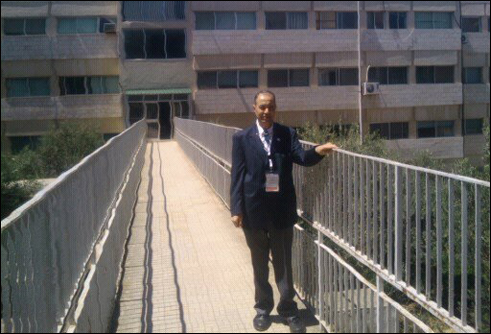BLOG: When you cross the bridge
“When you cross the bridge, they will ask you about this.”
I have been using this statement repeatedly over the last few years during my problem-based learning (PBL) classes, which are part of the curriculum at Michigan State University College of Human Medicine. PBL, a preclinical class, is part of the curriculum at our medical school for second year medical students and consists of 3-weekly, 2-hour sessions, each class consists of seven to nine students and an instructor for small group table discussions.
PBL classes are given throughout the second year and cover all clinical domains. Each domain runs for 2 to 4 weeks and comprises seven to 10 clinical cases. In each session, a new case is opened and continues for two sessions starting with patient history, then physical examination, etc. The case unfolds in stages and the students work as a team to dissect each case, developing cues then differential diagnosis, etc.
I have immensely enjoyed teaching the PBL classes over the last 10 years at Michigan State University and have taught most clinical domains over the years. Faculty members are assigned PBL classes randomly and not by specialty. This year I am teaching the endocrine domain, which is the one before the last, gastroenterology. After the gastroenterology session ends in May, Michigan State University second-year medical students move into their third year to begin the clinical clerkship stage. In other words, they move from the medical school basic sciences buildings to community teaching hospitals and may “cross the bridge.”

In the late 1970s, I was a second year medical student at Jordan University in Amman. Fast forward, about 4 decades later and I am now teaching the PBL course for second year medical students at Michigan State University.
When teaching my PBL classes, I would always say, “When you cross the bridge, they will ask you about this.” Most students had never heard the statement before leading me to my story.
The first time that I began using the statement was in the spring of 2013, during the gastroenterology PBL class, the last class of the year. I had six or seven students.
At Jordan University Medical School, we had a senior physiology professor, Professor Banerjee, who used this statement all of the time during his didactic lectures. Our class had big windows facing the teaching hospital on a hill. The medical school basic sciences building was connected to the hospital by a bridge that leads to the hilltop a few meters from the back entrance of the hospital building. Sitting in the physiology class, the first thing you could see through the window was the bridge.
Professor Banerjee would be teaching us some new material and in order to emphasize the importance of the material to clinical medicine, he would use the statement to remind us how the piece of basic science would be relevant to our future clinical clerkships and clinical career.
The students from my PBL class in 2013 and I have kept in touch and it so happens that our teaching hospital in Lansing does have a skybridge over a major city street, connecting the main hospital building with large professional buildings. We used this building at all times while in the hospital and it so happened that I would meet some of those students on the bridge and they would joke about “when you cross the bridge.” We also decided to start a club, the Medical Bridge Crossers’ Club, but the idea faded away as the students got busy with clinical clerkships and graduation.
No other PBL class got as excited about the bridge story until my current endocrine PBL class of 2017. I now have a group of nine students and they are all so wonderful. I felt just like I had in that PBL class of 2013 and these students have been similarly interested in the bridge story.
I hope this time we may be able to found the club as a get-together opportunity where second year medical students may ponder about developing strategies toward how the preclinical classes can be more meaningful as a bridge to the clinical stage of their medical education.
